Natural Solutions to Things That Bug You (49 page)
Read Natural Solutions to Things That Bug You Online
Authors: Myles Bader

Place the netting on poles covering the roses for the period of time that you notice they are bothering the roses. They cannot fly well and will leave the roses alone for greener pastures.
SAW-TOOTHED GRAIN BEETLES
General Information:
 These bugs have a saw-like projection at the midsection of their bodies that protrude on either side. The
These bugs have a saw-like projection at the midsection of their bodies that protrude on either side. The
saw-toothed grain beetle and the merchant grain beetle are tiny, slender, flat, brown beetles that are about 1/10 inch long. Both beetles are similar in appearance, with six saw-like tooth projections on each side of the thorax. The saw tooth beetle can be found in warmer climates and does not fly, while the merchant grain beetle flies.
The saw-toothed grain beetle also has smaller eyes than the merchant grain beetle and a much larger area just behind the eyes. In both larval and adult stages, these beetles feed on all food of plant origin, especially grain and grain products like cereals, dried meats, breakfast foods, stock and poultry feeds, coconut, sweets and dried fruit; it is not uncommon to find these beetles infesting pet food, bird seed and rodent bait.
They are tiny enough to very easily penetrate tiny cracks and crevices in packages food products. The adult beetles live an average of 6 to 10 months, but some individuals may live as long as 3 years if they are not disturbed. The female beetle of both species drops her eggs among the foodstuffs or tucks them away in a crevice in a kernel of grain.
Eggs are laid either singly or in small masses in crevices in the food supply, or may be laid freely in items such as flour or cereal products. When the small, white eggs hatch, the emerging larvae crawl and feed on the food stuff. They become full grown in about 2 weeks during summer warm weather and then construct a cocoon-like covering by joining together small grains or fragments of foodstuffs with their sticky secretion.
Within this cell, the larva changes to the pupae stage. Development from egg to adult may take from 3 to 4weeks in summer.
BAY LEAVES TO THE RESCUE
These beetles do not like bay leaves. Place them around your pantry and even into some of the flour or grain products if they cannot be sealed up in a plastic container. A stick of spearmint gum in the product also works great.
SPIDER BEETLE
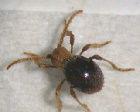 The spider beetle
The spider beetle
is a scavenger and prefers stored food. The beetle’s got its name from the shape of the adult beetle, which has long legs and antennae and when viewed from above, resembles a spider. It also has a “humped” appearance.
The adult spider beetle is shiny, reddish brown to almost black and its head and thorax are covered with small hairs. The head and legs are cream colored and the beetle is often confused with the shiny spider beetle, which is completely reddish brown. There are several species of spider beetles, including the golden, the brown, and the white-marked.
Adult spider beetles will deposit their eggs in the material that the larvae will eat after they hatch, which may be broken grain, flour or grain products. They also feed on human hair, feathers and even droppings from birds or mammals. They also seem to be attracted to moist, damp areas and will eat products that are moldy or products that have been stored too long to be usable.
They can live by scavenging and can survive in places like empty warehouses, feeding on old rodent droppings and other debris.
They are pests in mills, food processing facilities and museums and can infest bird and rodent nests. If the nest is in the attic or crawl space of a home, the beetles can easily move into the living space.
The larvae are curved and whitish in color and spin silken webbing on the surface of the food as they eat. They can also spin silken cocoons where they change to adult beetles. The adult beetles are active at night or in dark places, so they are difficult to see.
If you see holes in packages, webbing in food and silken cocoons, they are all signs of an American spider beetle infestation.
SQUASH BUG
Identification:
 This is a brownish-black, shield-shaped bug with long legs and antennae. They will suck the juices out of your plants and will be found on the leaves. They lay brown-gold shiny eggs on the underneath side of the leaves that change to reddish-brown. The adult will spend the winter in an old pile of leaves. The new hatchlings will have a reddish head and legs and green bodies.
This is a brownish-black, shield-shaped bug with long legs and antennae. They will suck the juices out of your plants and will be found on the leaves. They lay brown-gold shiny eggs on the underneath side of the leaves that change to reddish-brown. The adult will spend the winter in an old pile of leaves. The new hatchlings will have a reddish head and legs and green bodies.
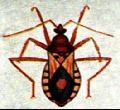
General Information:
They feed by inserting their needle-like mouthparts into the plant tissue and drawing out the juices. They will also release a toxin that will cause the plant to wilt. If these bugs are disturbed or crushed they will release a foul-smelling odor.
They prefer to eat squash, pumpkins, melons and cucumbers. Vine crops; are easily killed by these bugs, especially during the early part of the growing season.
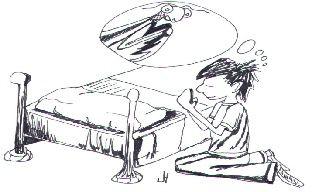
PRAY FOR A MANTIS
One of the best deterrents is to have some praying mantis around your property. If you don’t have any and this bug is around it would be best to import some. They will eat the eggs as well as the nymphs.
PLANTS TO THE RESCUE
There are a number of plants that will ward off these pests if planted around your garden. They are the radish, nasturtium, onion, tansy and marigold plants. If you plant mustard greens near you garden they will go for that and leave all other plants alone. Planting peas in the rows will also deter them.
SOAP THEM UP
If you want to kill then, just use an insecticidal soap spray. You can also use a spray prepared from imitation vanilla extract and water.
HANDPICKING IS THE ANSWER
This is one bug that handpicking really works well. Wear gloves since they will release their foul-smelling chemical when you touch them.
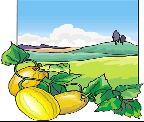
PLANT BUG RESITANT VARIETIES
There are a number of bug resistant varieties that will fare better than most. These are Table Queen, Royal Acorn, Early Golden Bush Scallop, Early Summer Crookneck, Early Prolific Straightneck and Improved Green Hubbard squash.
TREE CRICKET
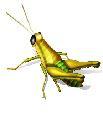
Identification:
Sometimes called the blackhorned tree cricket is a problem for raspberries and blackberries. It is a greenish-yellow bug with feelers projecting from the front of its black head.
General Information:
They will also attack a number of wild shrubs and love fruit trees when they can get to them. If you have a square field you will have less damage than if you have a long narrow field. The berry canes that are injured will show areas of split bark in an irregular line. If you look inside the splits you will see numerous small holes that will extend into the pith.